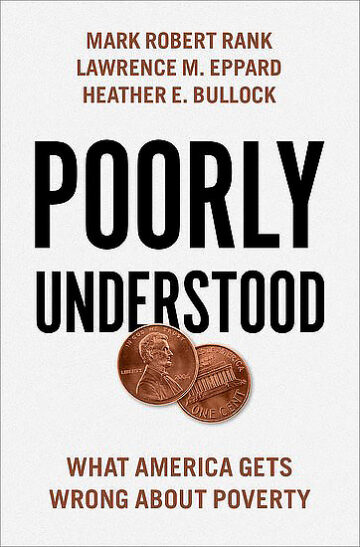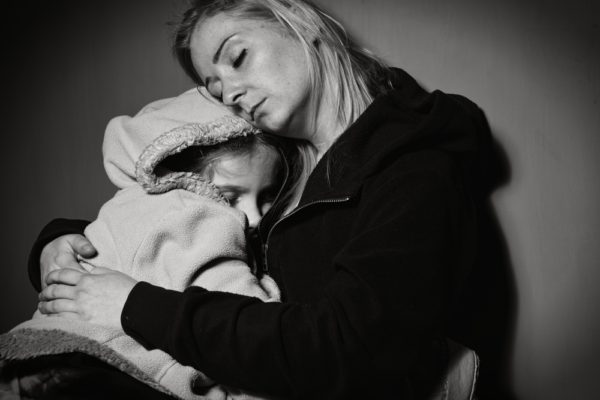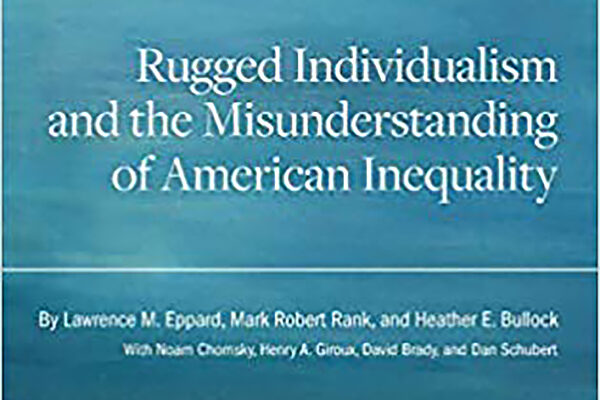What if the idealized image of American society — a land of opportunity that will reward hard work with economic success — is completely wrong?
“Poorly Understood: What America Gets Wrong About Poverty,” a new book from Mark Rank, a leading academic expert on poverty, explores this concept.
It is the first book to systematically address and confront many of the most widespread myths pertaining to poverty. What if poverty is an experience that touches the majority of Americans? What if hard work does not necessarily lead to economic well-being? What if the reasons for poverty are largely beyond the control of individuals?
“Within the United States, we tend to view poverty as an issue of ‘them’ rather than ‘us,’” said Rank, the Herbert S. Hadley Professor of Social Welfare at the Brown School at Washington University in St. Louis and author of numerous books on poverty and the American dream. “Those in poverty are seen as strangers to mainstream America, people of color, falling outside acceptable behavior, and as such, to be scorned and stigmatized.

Poorly Understood
What America Gets Wrong About Poverty
“Yet it turns out that the vast majority of Americans will experience at least one year below the poverty line,” Rank said. “Poverty touches all races, all regions of the country and all age groups. Very few of us are immune from the reach of poverty at some point. This understanding can shift our perceptions of the poor. In a sense, ‘We have met the enemy, and they are us.’”
Informed by the latest research on poverty, “Poorly Understood” — co-authored by Lawrence Eppard of Shippensburg University and Heather Bullock of the University of California at Santa Cruz — not only challenges the myths of poverty and inequality, but explains why these myths continue to exist. It provides a blueprint for how the nation can move forward to effectively alleviate American poverty.
Economic mobility
“What has happened in the United States is that as income and wealth inequality have gotten more extreme, it has become harder for people to be upwardly mobile,” Rank said. “In a sense, the rungs on the ladder of opportunity have grown further apart, making it harder to climb that ladder.”
As a result, he said, the U.S. has much less economic mobility than most other high economy countries.
“For too long, our tax and economic policies have favored the well-to-do and ignored the rest of the population,” Rank said. “The result is that the bottom 60% of Americans own less than 1% of the entire financial wealth of the country.
“In our book, we discuss a variety of innovative policies designed to help turn this pattern around. Hopefully, with a new administration, we will begin to see some serious attention given to these policies.
A ‘Black problem’
“I would point out that the United States frequently views poverty and inequities through the lens of race and ethnicity,” Rank added. “Poverty is often seen as a ‘Black problem’ rather than as an ‘American problem.’ The issue of race has been used by politicians over the years to divide poor Blacks and whites from seeing their common economic interests.
“Research has also shown that more racially heterogeneous societies, such as the United States, tend to be less generous in their economic redistribution policies to address poverty while countries that are more racially homogeneous, such as the Nordic countries, tend to have much more robust social safety nets,” he said. “One reason may be that we tend to be less concerned about the needs of others when they appear different from us.”
And politics should be removed from the poverty equation, Rank noted.
“We need to understand that alleviating poverty is neither a Red issue nor a Blue issue, but rather an American issue,” Rank said. “The Republican impoverished voter in Appalachia has much more in common with the urban Democratic poor voter in St. Louis than he or she may realize.”
“Poorly Understood: What America Gets Wrong About Poverty” is published by Oxford University press and will be released March 1.


